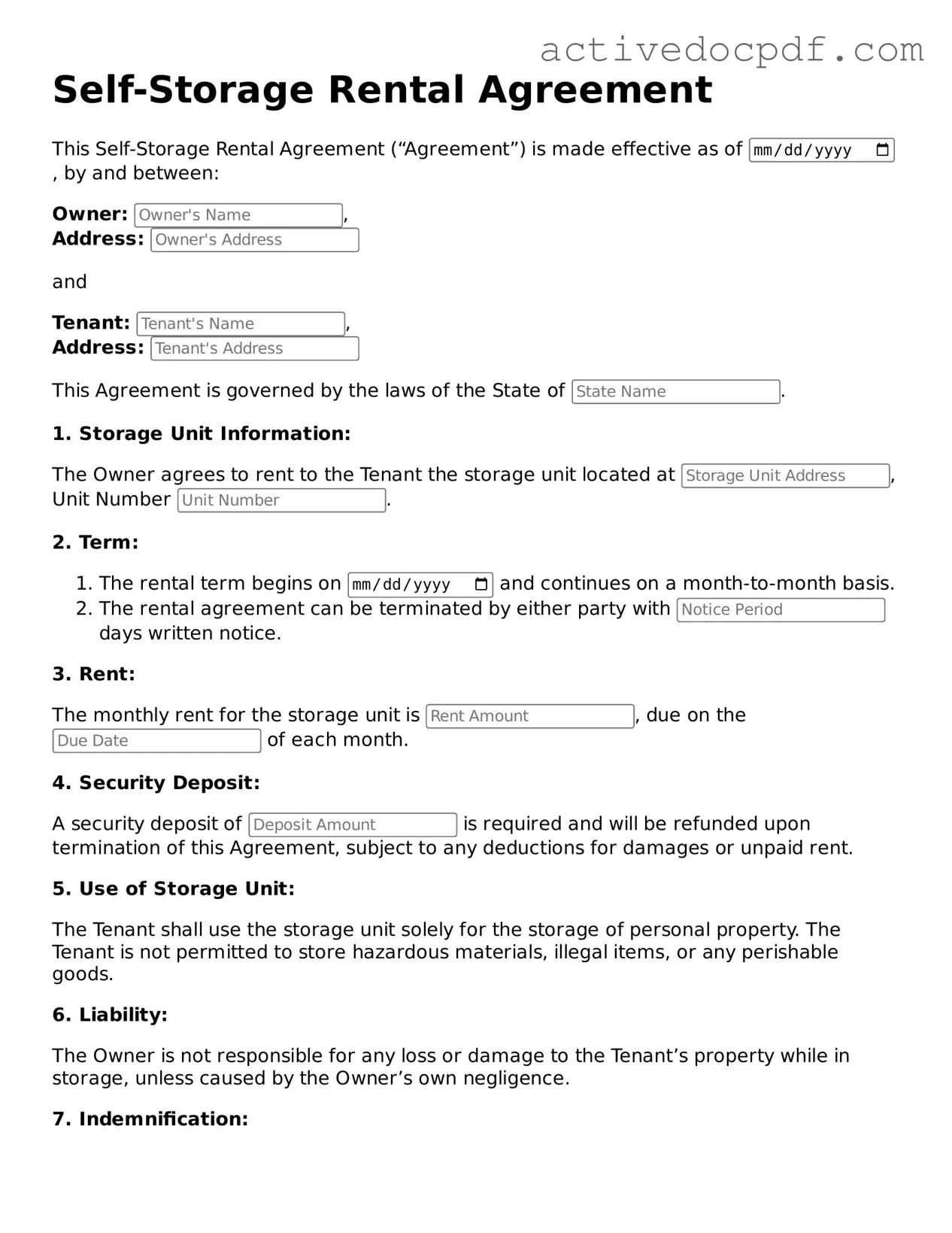Guide to Filling Out Self-Storage Rental Agreement
Completing the Self-Storage Rental Agreement form is an important step in securing your storage unit. This process ensures that both you and the storage facility are clear on the terms of your rental. Follow these steps carefully to fill out the form accurately.
- Begin by entering your personal information, including your full name, address, phone number, and email address.
- Provide the rental unit number you wish to lease, as well as the size of the unit.
- Indicate the rental term, specifying whether you are renting on a month-to-month basis or for a fixed period.
- Fill in the rental rate, including any applicable taxes or fees associated with the unit.
- Include your payment information, detailing how you plan to pay the rent (e.g., credit card, check, etc.).
- Read through the terms and conditions of the rental agreement carefully. Ensure you understand all clauses.
- Sign and date the form at the designated area, confirming your agreement to the terms outlined.
Once you have completed the form, review it for accuracy before submitting it to the storage facility. This will help avoid any potential issues down the line.
